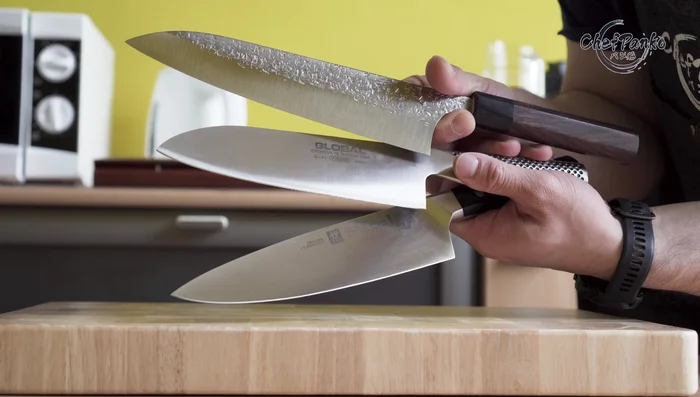Choosing the right Santoku knife can elevate your cooking experience. This versatile Japanese knife, meaning "three virtues," excels at a wide range of cutting tasks, from delicate slicing to robust chopping. Its unique design, featuring a shorter, flatter blade than many other knives, makes it incredibly efficient and comfortable to use for both professional chefs and home cooks alike. This guide will walk you through the key factors to consider when selecting a Santoku knife, ensuring you find the perfect tool to suit your needs and culinary style.From blade material and construction to handle comfort and balance, we'll explore the crucial elements that distinguish a high-quality Santoku. We'll cover essential aspects like blade sharpness and edge retention, handle materials and ergonomics, and the importance of balance point for precise control. By understanding these factors, you'll be empowered to make an informed decision and invest in a Santoku knife that will become an invaluable addition to your kitchen for years to come.
Pros And Cons
- Great for home use
- Easy to control
- Good for slicing motions
- Accommodates Western cooks' preferences
- High-performance
- Impact resistant (some models)
- Not suitable for all slicing (depending on balance point and design)
- Some designs may not be impact resistant
Read more: 10 Best Ceramic Sushi Knives: Ultimate Guide
Understanding the Santoku Knife
The Santoku knife, meaning "three virtues" in Japanese, is a versatile kitchen tool excellent for a variety of cutting tasks. Its unique design, characterized by a shorter blade and a flatter profile compared to other knives, is particularly effective for mincing, dicing, and slicing.

The Santoku's versatility stems from its ability to handle various ingredients efficiently. Its broad, flat blade allows for precise chopping, while the curved edge facilitates rocking motion for delicate cuts. This makes it ideal for both professional chefs and home cooks.

Blade Material and Construction
The blade material significantly impacts a Santoku's performance and longevity. High-carbon stainless steel is a popular choice for its durability, sharpness retention, and resistance to corrosion.

The construction of the knife is also key. A full tang (where the blade extends the full length of the handle) ensures strength and balance, while a well-made handle offers comfortable grip and control. Look for a handle that feels secure in your hand and won't slip during use.

Pay attention to the blade's sharpness and edge retention, as a well-made Santoku will stay sharp longer, reducing the need for frequent sharpening.
Handle Design and Comfort
The handle is as crucial as the blade. A comfortable, well-balanced handle allows for precise control and reduces hand fatigue during extended use.

Consider the handle material – wood, plastic, or composite materials offer different properties such as durability, grip, and aesthetics. The handle shape and size should also fit your hand comfortably.

The weight and balance of the knife are critical. A well-balanced Santoku will feel effortless to use and prevent wrist strain.

Balance Point and Functionality
The balance point, where the knife balances perfectly on your finger, is a critical aspect of its overall feel and usability.

A knife with a well-centered balance point allows for effortless control and precise cuts. Look for a Santoku with a balance point that feels natural in your hand.

Consider your intended use. A Santoku used primarily for slicing will benefit from a balance point closer to the blade, while a knife meant for more general chopping might prefer a more center-weighted design.

Overall Considerations and Conclusion
Beyond the blade and handle, other factors like edge retention, price point, and overall aesthetics can influence your decision. A high-quality Santoku will retain its sharpness for longer periods, reducing sharpening needs.

Consider your budget. While higher-priced Santoku knives often offer superior materials and construction, many excellent options exist at various price points.

Ultimately, the best Santoku knife is one that feels comfortable in your hand, allows for precise control, and meets your specific cutting needs. Don’t hesitate to try out a few knives before making your final purchase.

